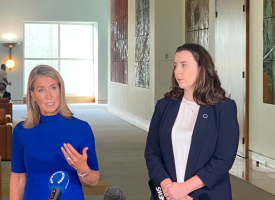Better broadband needed in the bush
The AMA has warned that health services in rural, regional, and remote Australia could fall even further behind city services, without urgent Government action to ensure all Australians have access to affordable and reliable high speed broadband.
The AMA today released its Position Statement on Better Access to High Speed Broadband for Rural and Remote Health Care, which calls on the Government to improve internet access across the nation.
AMA Vice President, Dr Tony Bartone, said that rapid improvements in technology have the potential to deliver better health outcomes at lower cost outside major cities and towns through telemedicine and eHealth.
“Regional and rural communities already face a range of disadvantages when compared to their city counterparts,” Dr Bartone said.
“They have more difficulty accessing health services close to home, are more likely to put off visiting their GP due to distance and cost, and have higher rates of potentially preventable hospitalisations.
“It is essential that these Australians have access to the same standard of health care, including that provided via technology, as those living in the major cities.
“However, many regional and remote areas have very poor internet connections, with relatively small download allowances, and at a much higher cost and slower speed than the services available in our cities.
“Earlier this year, the AMA Rural Health Issues Survey 2016 identified access to high speed broadband for medical practices as the top priority for rural GPs, and the second highest for rural doctors in general.
“Many rural doctors told us of the problems they encounter with slow and unreliable internet access, not only for conducting day-to-day business, but also for caring for patients via eHealth and telemedicine.
“As mainstream health care provision becomes increasingly technology-based, and requires larger amounts of data and faster broadband services, there is a real risk that regional, rural, and remote areas of Australia will be left further and further behind.
“The Government must take action to ensure that all Australians have access to reliable, high speed broadband, and the health care services it can enable.”
In New Zealand, it has been estimated that the benefits from broadband-enabled health care could reach about $6 billion over a 20-year period, from reduced hospital, travel, and drug costs, and improvements in care.
A case study by Deloitte Access Economics shows savings to a single, older Australian of $7,400 a year, with savings to the Government, through reduced health and service provision costs, of more than $14,500.
“At a time when the health budget is under pressure, it makes sense to invest in infrastructure that will not only improve health care, but also save money,” Dr Bartone said.
“Government policies are essential in bringing internet access to under-served groups and regions across the country.”
The Position Statement calls on the Government to adopt the recommendations of the 2015 Regional Telecommunications Review, conducted by the Australian Communications and Media Authority, to develop a new Consumer Communication Standard for voice and data, and to establish a Consumer Communication Fund to underwrite investment in loss-making but essential infrastructure and services in regional Australia.
The AMA also calls on the Government to:
- Extend the boundaries of the NBN’s fibre cable and fixed wireless footprints, and mobile coverage, wherever possible;
- Begin an incremental process of expanding the terrestrial network to address increased usage in the future;
- Develop measures to prioritise or optimise the broadband capacity available by satellite for hospitals and medical practices, either by exempting or allocating higher data allowance quotas, or by providing a separate data allowance;
- Create universal, unmetered online access to Government, hospital and health services for people in rural and remote areas;
- Establish an innovation budget for development of local infrastructure solutions for rural and remote areas; and
- Engage with State, Territory, and local government and related stakeholders to co-invest or coordinate planning to achieve the optimum overall infrastructure outcome for their area. This could involve public private partnerships or the leveraging of philanthropic infrastructure funding through, for example, tax concessions.
The AMA Position Statement on Better Access to High Speed Broadband for Rural and Remote Health Care can be found at https://ama.com.au/position-statement/better-access-high-speed-broadband-rural-and-remote-health-care-2016.
10 January 2017
CONTACT: John Flannery 02 6270 5477 / 0419 494 761
Maria Hawthorne 02 6270 5478 / 0427 209 753
Follow the AMA Media on Twitter: http://twitter.com/ama_media
Follow the AMA President on Twitter: http://twitter.com/amapresident
Follow Australian Medicine on Twitter: https://twitter.com/amaausmed
Like the AMA on Facebook https://www.facebook.com/AustralianMedicalAssociation


